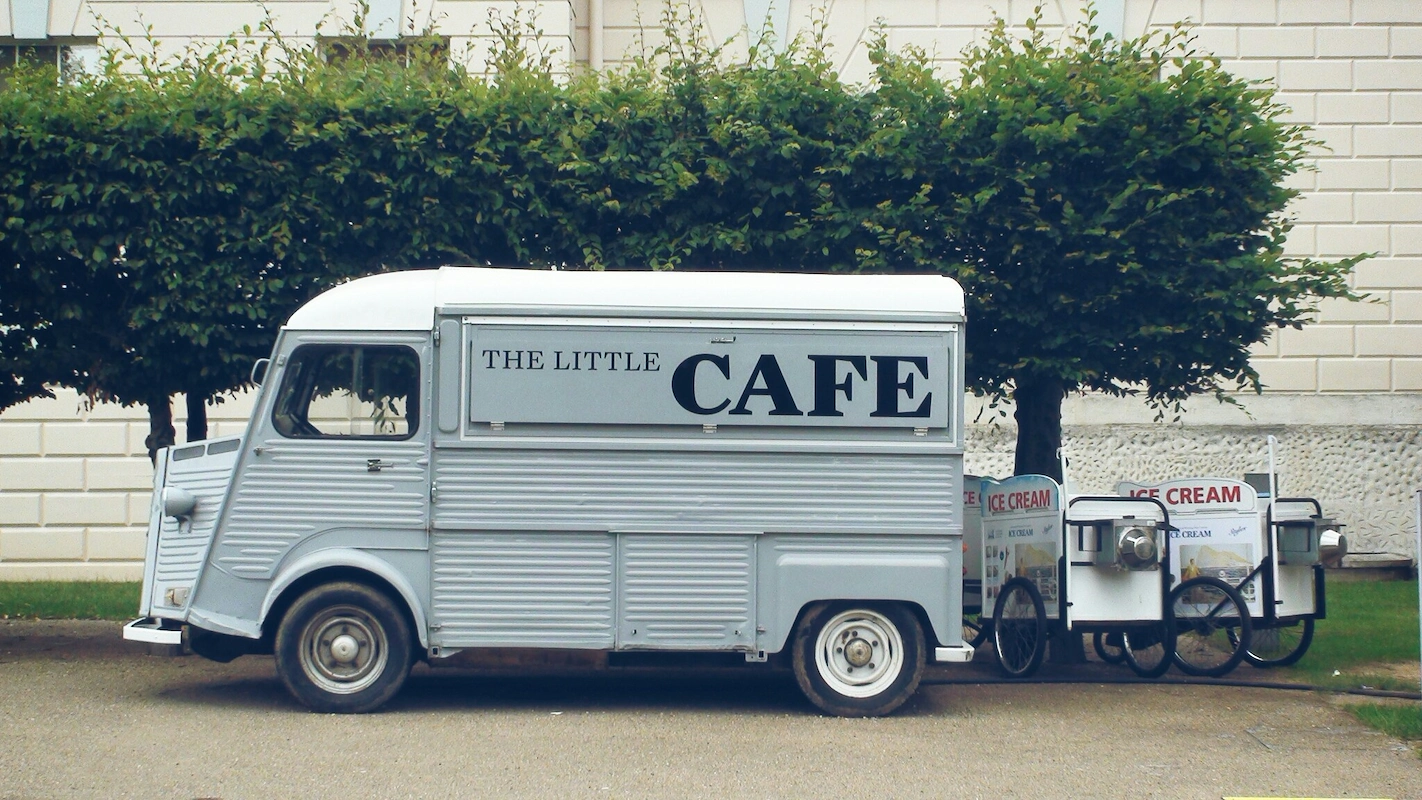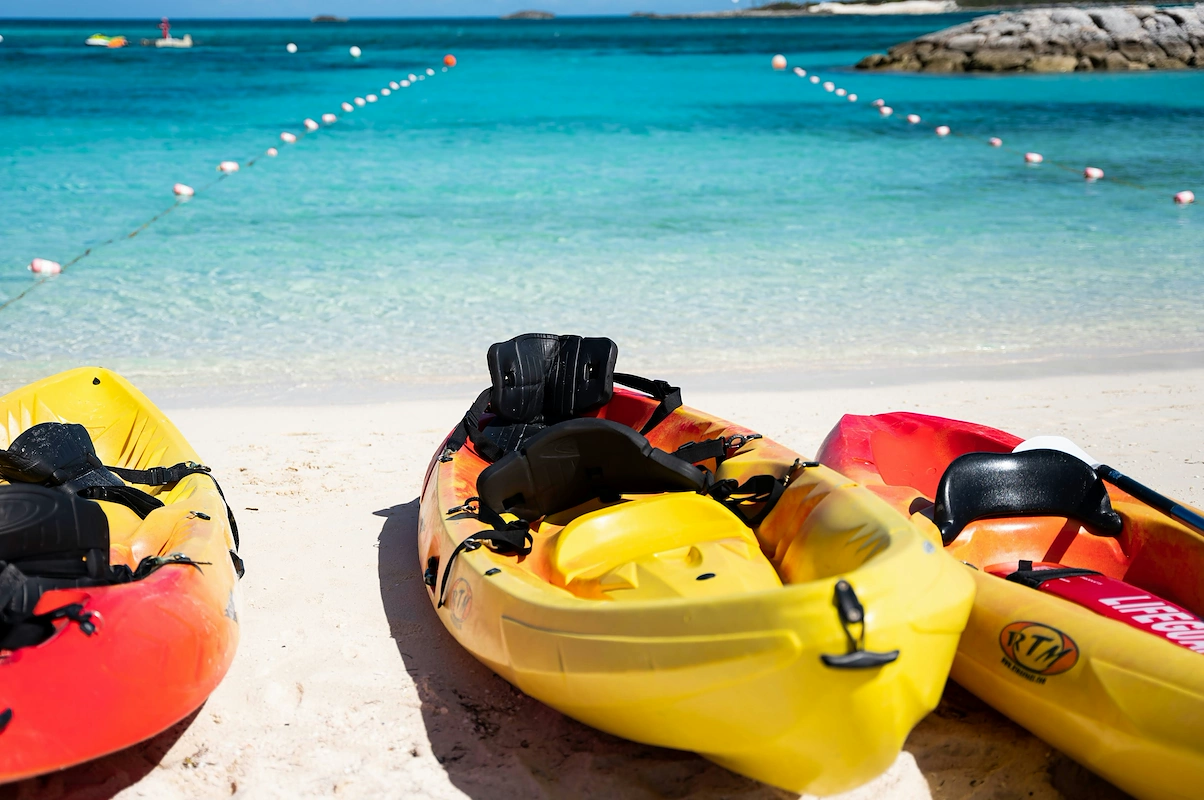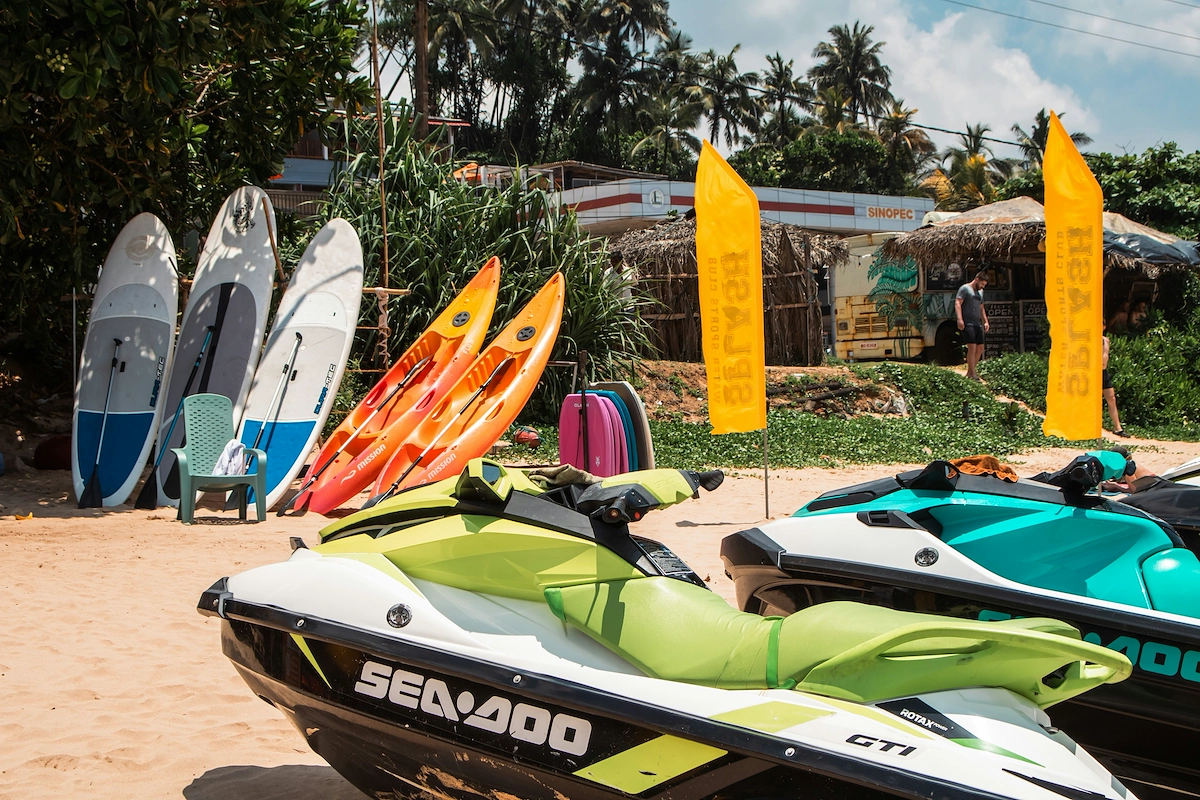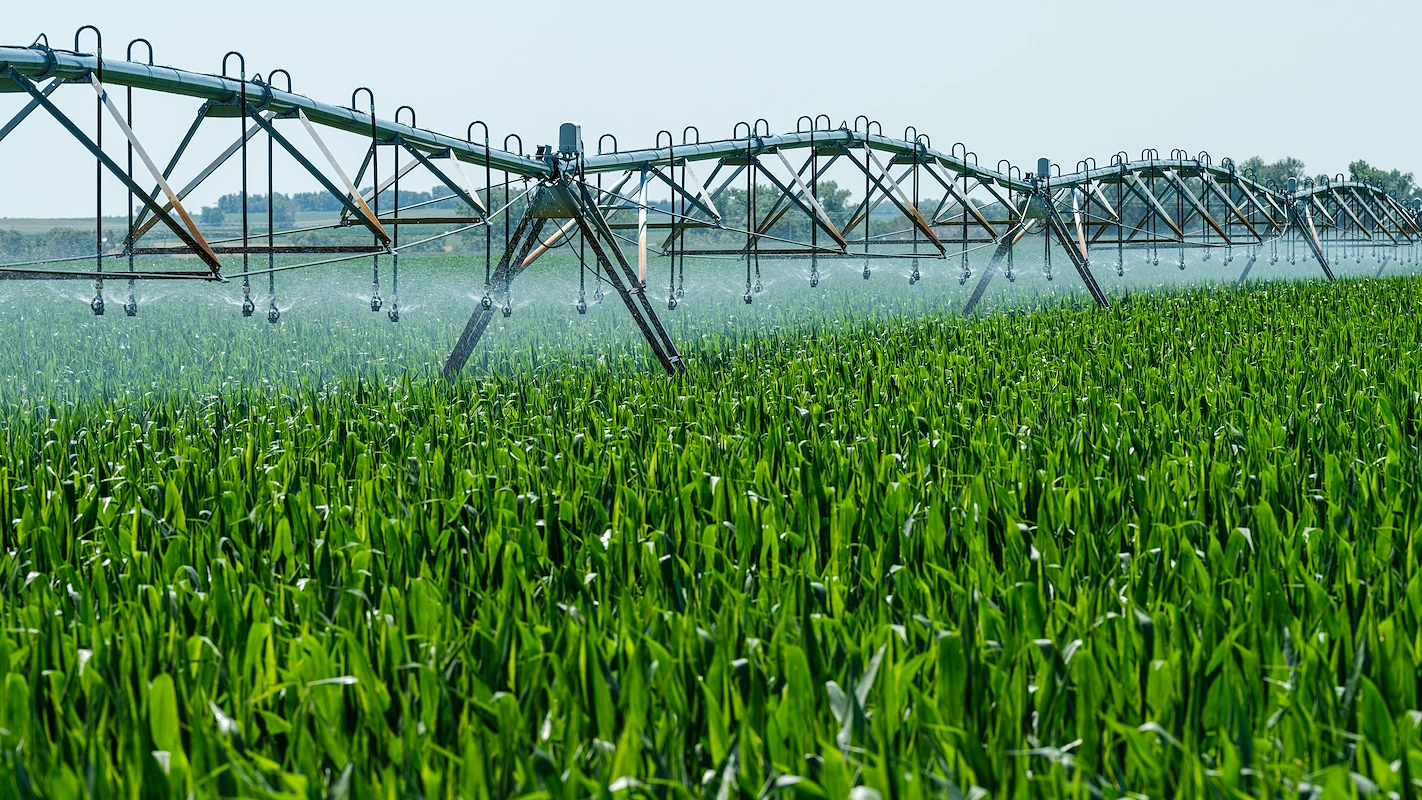Starting a coffee cart business is an exciting venture that combines a passion for great coffee and customer service with smart business sense. The coffee shop market is a multi-billion dollar industry, fueled by steady demand from morning commuters, office workers, and event crowds.
This guide will take you through the practical steps of securing permits, acquiring the right equipment, choosing a great location, and building supplier relationships to help you launch a successful coffee cart business in the U.S.
Step 1: Plan your business and validate your idea
Start by researching potential locations. Spend a few weekday mornings counting foot traffic near office buildings, transit stops, or farmers' markets. This gives you real data on potential customer volume.
You can also check your city's public data portals or local business association reports for demographic information. This helps you understand the local customer base and their habits.
Analyze your competition
Use Google Maps to identify every coffee seller nearby. A frequent mistake is to only track other carts. You should also note established cafes, as they are your direct competition. This gives you a full picture of the market.
For deeper insights, databases like ReferenceUSA, often free through your local library, can provide sales volume estimates for nearby businesses. This helps you gauge market saturation.
Estimate your startup costs
Mapping out your finances early helps you build a solid plan. A new coffee cart with an espresso machine, grinder, and water system typically runs from $10,000 to $25,000.
In addition, budget for permits and licenses, which can cost between $500 and $2,000. Your initial inventory of beans, milk, and cups will likely add another $1,000 to $3,000.
Here are 3 immediate steps to take:
- Scout three potential locations and count foot traffic during peak hours.
- Map all coffee competitors within a one-mile radius of your top location.
- Create a detailed startup budget with categories for equipment, permits, and inventory.
Step 2: Set up your legal structure and get licensed
Choose your business structure
Most new cart owners form a Limited Liability Company (LLC). This structure protects your personal assets if the business faces legal issues. A sole proprietorship is simpler but offers no liability protection, putting your personal finances at risk.
An LLC also provides pass-through taxation. Business profits pass directly to you, and you report them on your personal tax return. This setup avoids the double taxation that corporations can face, which is a nice benefit when you're starting out.
Secure your permits and licenses
First, get a federal Employer Identification Number (EIN) from the IRS website. It’s free and you'll need it for taxes and banking. Next, register for a seller's permit with your state's department of revenue to collect sales tax.
Local permits are the most involved part of the process. You will need a Mobile Food Facility Permit and a Health Department Permit from your county. A frequent misstep is underestimating the timeline here; expect four to eight weeks for inspections and approval.
The health department will inspect your cart's plumbing, water tanks, and food safety setup. Costs for these local permits can range from $200 to $1,000, so it's a good idea to factor this into your budget early on.
Here are 4 immediate steps to take:
- File for an LLC with your state's Secretary of State office.
- Apply for a free Employer Identification Number (EIN) on the IRS website.
- Contact your county health department to get their mobile food vendor packet.
- Register for a seller's permit through your state's tax agency.
Step 3: Secure your insurance and manage risk
Protecting your new business from day one means getting the right insurance. This is not just a formality. Many event organizers and landlords will require proof of insurance before you can operate on their property.
Key insurance policies for your cart
General liability is your first line of defense. It covers claims if a customer gets hurt or you damage someone's property. Plan for a policy with at least $1 million in coverage, which typically costs between $400 and $700 annually.
Next, you need to protect your physical assets. An inland marine policy covers your cart and equipment against theft or damage. A frequent mistake is to undervalue your gear to save on premiums. Always insure for the full replacement cost.
If your cart is on a trailer or is a vehicle itself, your personal auto policy likely will not cover it. You will need commercial auto insurance. Also, if you hire even one employee, you must have workers' compensation insurance by law.
You might want to get quotes from insurers who focus on mobile food businesses. Companies like the Food Liability Insurance Program (FLIP), InsureMyFoodTruck, and Next Insurance understand the specific risks and can offer tailored packages.
Here are 4 immediate steps to take:
- Get quotes for general liability and inland marine insurance from two specialized providers.
- Create a detailed inventory of your cart and all equipment with their full replacement costs.
- Review your auto insurance policy to see if business use is covered.
- Check your state's workers' compensation board for hiring requirements.
Step 4: Find a location and buy your equipment
Secure your spot
Focus on private properties like office parks or courtyards. These spots often have built-in foot traffic and fewer regulations than public streets. You will need written permission from the property owner. Check that the area is zoned for commercial or mixed-use activity.
When you negotiate a lease, propose a short-term agreement of three to six months to test the location. You might offer a percentage of your sales, typically 5-10%, or a flat monthly fee between $300 and $800, depending on the location's value.
Get your gear and supplies
Your cart must have an NSF-certified three-compartment sink and separate handwashing sink to pass a health inspection. A common mistake is to buy a cart without this, which leads to costly modifications. Expect the cart itself to be around 5x8 feet.
For equipment, you need a commercial two-group espresso machine, which can cost from $5,000 to $15,000. Pair it with a quality grinder for $1,000 to $3,000. Home-use machines cannot handle the volume and will not pass inspection.
With your equipment list ready, you can find suppliers. Local coffee roasters are a great start. They often have lower minimum orders, around 5-10 pounds, which helps you manage inventory and cash flow as you begin.
Here are 4 immediate steps to take:
- Contact property managers of three high-traffic office buildings about leasing space.
- Price out a two-group commercial espresso machine and a high-volume grinder.
- Request wholesale price lists from two local coffee roasters.
- Confirm your target city's zoning rules for mobile food vendors on their website.
Step 5: Set up your payment system
Your customers will expect fast, easy payment options. Most transactions will be via credit, debit, or digital wallets. Your system needs to be quick to avoid holding up the line, especially during the morning rush.
You might want to look for a payment solution with low, transparent fees and no extra hardware. A mistake some new owners make is to choose a system with hidden monthly costs or a clunky card reader that takes up valuable counter space.
For coffee carts that need to accept payments on-site, JIM offers a streamlined solution. With JIM, you can accept debit, credit, and digital wallets directly through your smartphone. Just tap and done.
At just 1.99% per transaction with no hidden costs, it's particularly useful for a fast-paced environment. This is a noticeable saving compared to other providers, which often charge between 2.5% and 3.5% per tap.
The setup is straightforward:
- Get Started: Download JIM app for iOS
- Make a Sale: Type the sales amount, hit sell, and ask your customer to tap their card or device on your phone
- Access Funds: Your money is available right on your JIM card as soon as the sale is done - no waiting for bank transfers
While most sales will be digital, you should still have a plan for cash transactions and a secure cash box.
Here are 3 immediate steps to take:
- Compare the transaction fees of at least two payment solutions.
- Download the JIM app to see how it works on your phone.
- Establish a cash handling policy and get a secure cash box.
Step 6: Fund your business and manage finances
With your plan in place, it's time to secure funding. SBA Microloans are a popular choice for carts, offering up to $50,000. Lenders like Accion Opportunity Fund work with these programs, and interest rates typically fall between 8% and 13%.
Beyond startup costs, you need working capital. Plan for at least $5,000 to $8,000 to cover your first six months of inventory, rent, and repairs. A frequent misstep is to underestimate this buffer, which can strain your business before it gains traction.
Manage your money from day one
Open a dedicated business checking account as soon as your LLC is formed. This keeps your personal and business finances separate, which simplifies tax time. You might also want to set up a simple bookkeeping system using software like Wave or QuickBooks Simple Start.
Here are 4 immediate steps to take:
- Research SBA Microloan lenders that serve your state.
- Calculate your six-month working capital needs based on your budget.
- Open a separate business checking account.
- Compare bookkeeping software options like Wave and QuickBooks.
Step 7: Hire your team and set up operations
Build your team
When you hire your first barista, look for someone with great customer service skills. Their main duties will be to make drinks, handle payments, and keep the cart clean. Expect to pay between $15 and $18 per hour, plus tips.
Before they start, your new hire must have a valid Food Handler's Card. Many owners forget this step and face issues during health inspections. The requirements vary by county, so check your local health department's website for specifics on training providers.
Streamline your daily workflow
Once you have a team, you need a system to manage schedules. You might want to look at software like Homebase or 7shifts. These platforms help you build schedules, track hours, and communicate with staff, all from an app.
As you manage your finances, aim to keep your labor costs between 25% and 35% of your total revenue. This is a standard benchmark in the coffee industry and helps ensure your cart remains profitable as you grow.
Here are 4 immediate steps to take:
- Draft a job description for a barista that outlines key responsibilities.
- Confirm your county's Food Handler's Card requirements and approved courses.
- Explore scheduling software options like Homebase and 7shifts.
- Set a target labor cost of 25-35% in your financial projections.
Step 8: Market your business and win customers
Your best marketing is a great product and a clean cart. A simple A-frame sign that announces your daily special can boost walk-up sales. A frequent mistake is to focus only on digital efforts and forget this simple, effective method to attract people passing by.
With your location set, you can build a local following on Instagram. Post high-quality photos of your drinks and use location-specific hashtags. You might want to run a small ad campaign that targets people within a one-mile radius of your cart, which can cost as little as $5 a day.
Build loyalty and partnerships
Encourage repeat business with a simple punch card. A classic "buy nine, get one free" offer costs very little but helps create a loyal customer base. You can order custom cards from sites like Vistaprint for about $20-$30 per 500 cards.
Also, consider partnerships with nearby offices. You could offer a 10% discount to their employees, which gives you a built-in customer group. A quick email to the office manager is often all it takes to start that conversation.
Here are 4 immediate steps to take:
- Design a message for an A-frame sign to display your daily special.
- Set up an Instagram profile and plan your first five posts.
- Get a price quote for 500 loyalty punch cards.
- Identify one nearby office and draft a partnership proposal email.
Step 9: Set your pricing and menu
Price your core drinks
Start with a cost-plus pricing model. Calculate the exact cost of your most popular drink, like a 12oz latte. This includes the coffee (about 18g), milk (8oz), cup, lid, and sleeve. Your total ingredient cost should be 20-25% of your menu price.
For example, if your latte costs $1.10 to make, a 25% food cost means you should price it around $4.40. Many new owners price too low to attract customers, but this can hurt your brand and profits. Your price signals quality, so do not undervalue your product.
Once you have your cost-based price, check what nearby cafes charge. Your price should be competitive but reflect your quality. If a local shop sells a similar latte for $5.00, pricing yours at $4.75 is reasonable. It positions you as a quality option without starting a price war.
Design a simple menu
Keep your initial menu small, with five to seven items. This speeds up service and minimizes waste. Focus on core drinks like espresso, Americano, latte, and drip coffee. You can add one or two seasonal specials to create interest and test new ideas without overhauling your inventory.
Here are 4 immediate steps to take:
- Calculate the per-drink cost for a 12oz latte, including all materials.
- Survey the menu prices of three direct competitors in your area.
- Draft a focused menu with no more than seven core drink offerings.
- Set your prices to achieve a 20-25% food cost while staying competitive.
Step 10: Maintain quality and scale your business
Establish your quality standards
Consistency is what builds a loyal customer base. Your espresso shots should pull between 25 and 30 seconds. Milk for lattes should be steamed to 150-155°F. Some owners guess these metrics, which creates an inconsistent product. Use a scale and a timer for every shot.
Know when to grow
With your quality locked in, you can plan for growth. Once you consistently serve over 150 customers a day for a full quarter, it might be time to expand. This could mean hiring another barista or exploring a second location.
When you hire, your labor cost should remain between 25% and 35% of revenue. If it creeps higher, you may need to adjust prices or schedules. For managing inventory as you grow, you could look at software like MarketMan or Craftable.
Here are 4 immediate steps to take:
- Document your drink recipes with exact measurements and temperatures.
- Track your daily customer count for 90 days to spot growth trends.
- Set a revenue goal that would trigger your expansion plan.
- Explore inventory management software like MarketMan or Craftable.
Starting a coffee cart is about more than just great coffee; it's about speed and consistency. Remember that your best customers are often in a hurry. A simple menu and a fast workflow will build loyalty faster than anything else. You have the roadmap, now go make it happen.
As you focus on speed, your payment system should keep up. JIM turns your phone into a card reader, so you can take payments without extra hardware for a flat 1.99% fee. It helps keep your line moving and your counter clear. Download JIM to get started.















